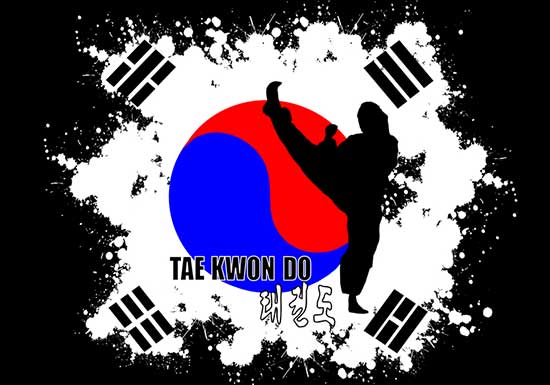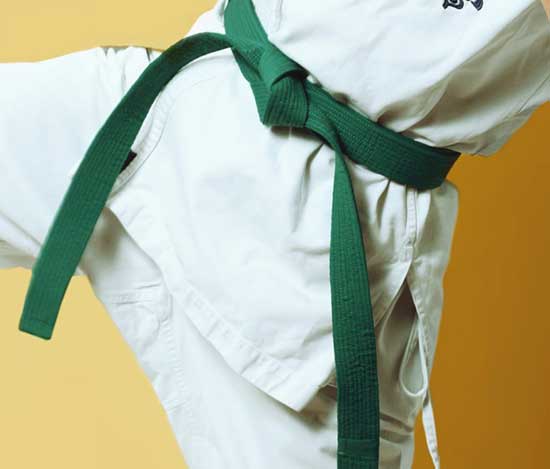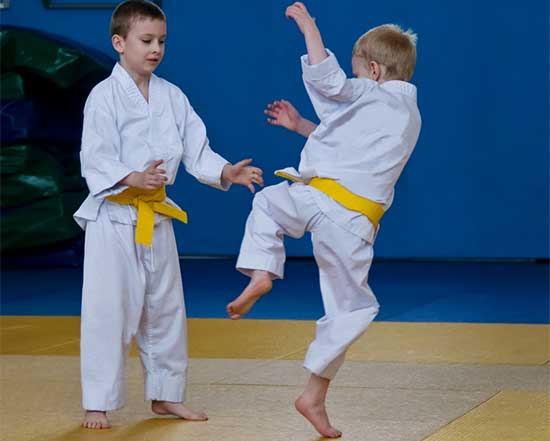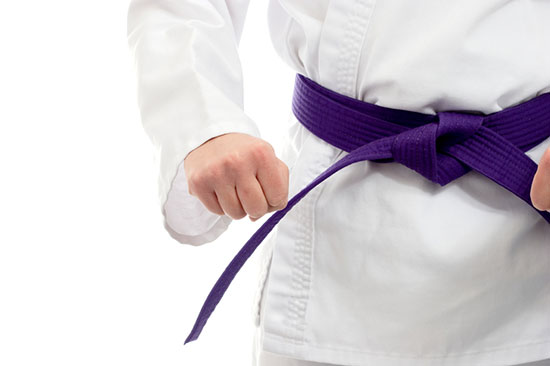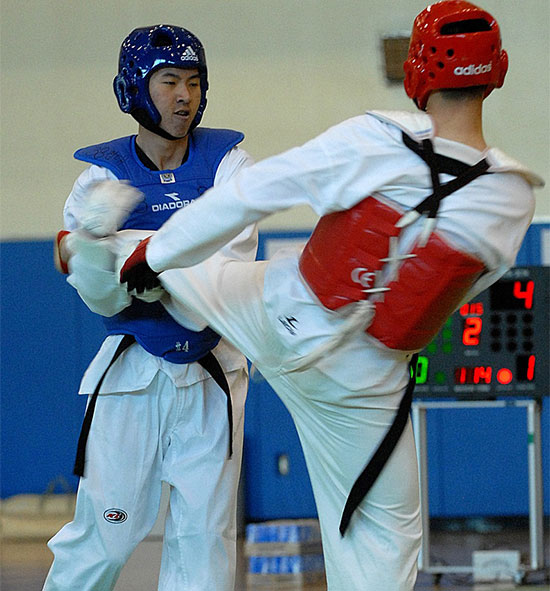Taekwondo is a type of Korean martial art. The sports version of this system is the most popular all over the world, although there is also a combat version of it.
Contents
How taekwondo was born?
In 1910-45, Korea was a Japanese colony. The colonial regime was expressed, in particular, in the targeted suppression of national elements in all spheres of culture – from poetry and school content to symbolism and traditional martial arts.
Having driven the Korean martial arts underground for 35 years, the Japanese interrupted in most schools the process of transmitting spiritual and mystical practices that are the innermost essence of any traditional school.
Therefore, when – in Korea, after the liberation from Japanese domination, a national revival began
In 1950, the heads of 9 “new” schools that arose after the end of the Japanese occupation, united to create a single unified style. These were the following schools: Yongmug-kwan, Kandog-kwan, Mudog-kwan, Odog-kwan, Sanmug-kwan, Hanmug-kwan, Chidog-kwan, Chanmug-kwan, Chkhondog-kwan (“kwan” in Korean means “palace “).
The work on the codification of the new style was led by 32-year-old Lieutenant General Choi Hong Hee (in Western transcription Choi Hong Hee), the leader of Odog-Kwan. Therefore, it is he who is usually called the “father” of taekwondo. The term has been coined since 1955, when General Choi announced, that a unified style – “Korean National Taekwondo Martial Art” – has been created.
In 1961, Choi Hong Hee headed the Korean Taekwondo Association he created, and in 1966 he established the International Taekwondo Federation (ITF) in Seoul. But 6 years later, when General Park Chung Hee became president of South Korea for the third time, having rigged the election results for this, General Choi went to Canada (to the city of Toronto) in protest and transferred the headquarters of the international organization he had created there.
ITF and WTF Taekwondo
The following year, in 1973, the World Tae-Kwon Do Federation (WTF) was created in South Korea, headed by Kim Un-yeon.
To emphasize the difference between ITF and WTF, the latter even developed new sets of formal exercises (“poomsae.”) In South Korea, the process of transition of taekwondo fighters from ITF to WTF began.
It took on a particularly wide scale after 1984 when it became clear that at the Olympic Games the competitions would be held according to the WTF rules.
Well, General Choi and his federation, due to the loss of personnel and economic weakness, had to bow to the authorities of North Korea.
Now the WTF has branches in 118 countries of the world, including the CIS and Eastern Europe. It has about 25 million athletes in its ranks, including over one and a half million in the Republic of Korea itself. ITF has much more modest indicators, its main “foothold” is the DPRK.
In the rest of the world, the number of General Choi’s followers cannot be compared to those of Kim Woon Young.
The headquarters of the WTF is located in Seoul, in the huge center known as Kukkiwon. In addition, another international organization appeared a few years ago: the Global Taekwondo Federation,
The opening of Kukkiwon, which took place on November 30, 1972, finally completed the process of uniting taekwondo schools, for a single training center was created, which solves the following five main tasks:
- The official assignment of dans and the issuance of certificates to both students of Kukkivon and representatives of national associations that are part of the WTF;
- Training of instructors and popularization of taekwondo all over the world;
- Research and development of taekwondo technique;
- Chronicle of taekwondo records, publication of textbooks and teaching aids, production of educational videos;
- Technical assistance to all organizations related to WTF taekwondo.
The total area of the first floor of Kukkiwon is 10 thousand square meters. In addition to the main hall for training, competitions, and examinations, the Kukkiwona complex includes lecture halls and gyms, a polyclinic – cafeteria, and other necessary premises.
Kukkiwon is also home to the WTF Headquarters and Secretariat, and the Taekwondo Academy, which is responsible for scientific research in this area and the training of instructors.
The Kukkiwon Hall is equipped with modern technical equipment that allows competitions and educational processes to be held at the highest level, it has 1800 seats for spectators.
This complex, worth more than a million US dollars, hosted the First and Second World Championships, the First Asian Taekwondo Championship, the Korean National Championships, international seminars of judges and instructors, and numerous demonstrations and demonstration performances.
The conferring of the degrees of Dan is exclusively within the purview of Kukkivon. Anyone who wants to pass the exam in Kukkiwon for the first or higher dan must submit a recommendation from a master who has a qualification of at least 4th dan, who is fully responsible for the readiness of his “protégé” for the exam.
But before contacting Kukkiwon directly, a dana applicant must pass a practice test in any dojo or club in front of their instructor or in front of the local certification committee.
Some features of certification of children and adolescents under the age of 15 should be noted. Although children can start their taekwondo classes at any age, they are allowed to the first certification no earlier than ten years of age.
After passing the appropriate practical test, the children of this age group are given not given, and pkhumas – from 1st to 3rd.
After 15 years, these phumas (again confirmed by appropriate tests) can be replaced by adult dans – also from 1st to 3rd, but until this age limit is passed, the color of the student’s belt with phum is not entirely black. and black and red.
Given, starting from the 4th, can be assigned only to those who have already turned 18 years old. Indeed, to master any level of mastery in taekwondo, not only experience is required, but also a certain length of service, which is also regulated by the rules of Kukkiwon. So, to obtain 1 pkhum, it must be at least a year.
Thanks to such a system, Kukkiwon has ensured that holders of high dans are mature people who have come a long way in taekwondo, able to make a significant contribution to its further development.
So, starting from the 6th dan, candidates who applied for passing qualification tests must also submit written developments on one of the following topics: development of taekwondo techniques; taekwondo philosophy; teaching methodology based on personal experience; organizational principles; history of taekwondo.
Look closely at the table and you will see what the exam taker is at. 6th dan must have been practicing taekwondo for at least 15 years.
Therefore, the fact that many of the 6th-7th dan holders are not yet forty indicates that they began to practice in childhood and devoted their entire adult life to taekwondo.
Kukkiwon strives to ensure that everyone among the Danish holders living abroad can undergo a special training program on the land of the historical homeland of taekwondo.
To do this, you just need to contact Kukkiwon in advance in writing, indicating the date of your arrival, the estimated length of stay, the main subject of the training, the number of training, etc.
On the basis of this application, an individual or group training program will be drawn up in Kukkiwon, an appropriate room will be found for them, and instructors will be provided.
At the beginning of the path, before acquiring the first dan, the student goes through ten introductory “steps” – kup.
As the next kup is mastered, the color of the student’s belt changes. And if the first belt of the student is white (which symbolizes the purity of thoughts), then: then it is successively replaced by yellow, blue and red.
During this time, the student comprehends the basic technique (first ordinary strikes, then jumping strikes) and masters the rituals adopted in taekwondo (learns to wear a uniform correctly, tie a belt, greet elders, etc.).
The black belt, the color of which indicates dignity, is worn by the masters. from the first given and above.
Certification for the next degree “dan” includes three main elements. First, there is a sparring (kyorugi) between the candidate and the owner of the dan for which he applies.
Secondly, at the request of the attestation commission, sparring can be supplemented with “kyokpha” – exercises for breaking wooden planks, tiles, etc., demonstrating blows of such force that cannot be used against people without serious risk to them.
But the main element of all programs is poomsae.
These are complexes of formal exercises, similar to Japanese kata, in which the technique of varying complexity is most accurately and clearly revealed. There are 11 types of poomsae in total: Taegyuk, Phalgue, Goryeo, Kumgang, Taebaek, Pyongwon, Sip-jin, Chithe, Cheongkwon, Hansu, and Ira.
But since the Taegyk and Phalgwe complexes, used for testing at early levels, are each subdivided into 8 components, the total number of poomsae is 25. They differ not only in complexity, but also in the number of movements – from 19 to 35 -ty.
All their names have a deep meaning and are mainly ancient or Buddhist, and the pattern of movements in these complexes is such that when they are performed, a symbol similar to the name of the corresponding pumse is written out on the floor.
So for example, all eight complexes of Poomsae Tegyk, which means “Great Limit”, have the outline of the hieroglyph “van”, which means “king” or “ruler”. The word “Geumgang” means “Diamond Mountains”, the most picturesque place in Korea, and at the same time “strong” or “unbreakable” and the scheme of movements of this poume forms the hieroglyph “mountain”.
The highest poomsae Yryo looks like a Buddhist swastika and means “unity” or “one essence”. The person passing the certification performs one poomsae, which is included in the compulsory certification program for this level, and one at the choice of judges from among those mastered at the previous stage.
Taekwondo (kyorugi) sparring takes place on a 12×12 meter court in three three-minute rounds. Break between rounds – 60 sec.
Both opponents have electronic vests, with the help of which hits in the face and midsection are fixed, as well as specially developed WTF protectors, consisting of a helmet, a “shell” covering the groin, shoulder pads, knee pads and a “hogu” armor covering the chest and sides.
Evaluation is carried out both by the sum of points and by knockdowns.
Punches are allowed only in protected places, and any blows below the belt and attack with a fist to the face are not recommended, as well as an attack of a fallen opponent.
For the throws pushing and knee, attacks are warned. All types of capture are prohibited. When counting points, a kick always takes precedence over a punch, aggressive behavior over defensive behavior, a kick of the face over an attack of the body, and a jump kick over a kick from an ordinary stance.
Taekwondo leaders who have little or no connection with the WTF, such as, for example, Jun Ri, who first used protectors in 1973, or the very popular in the USA master Hee Il Cho, openly criticize the WTF for the competitive nature of competitions and training, arguing that Kim Woon Young dropped the last syllable from the word “taekwondo”, reduced it to the level of purely sports martial arts. Hee Il Cho himself promotes a more realistic style, known to Soviet audiences in the film “Best of the Best,” in which he starred as the head coach of the Korean national taekwondo team and his students as members of this team.
There is no technique for working with weapons in taekwondo. Unlike Chinese wushu or Japanese Kobudo, which use a variety of swords, poles, etc., taekwondo emphasizes the development of the capabilities of the human body, which in itself can be quite a formidable weapon. Therefore, the only items used are protectors.
Photo by: Tasnim News Agency, CC BY 4.0 https://creativecommons.org/licenses/by/4.0, via Wikimedia Commons
